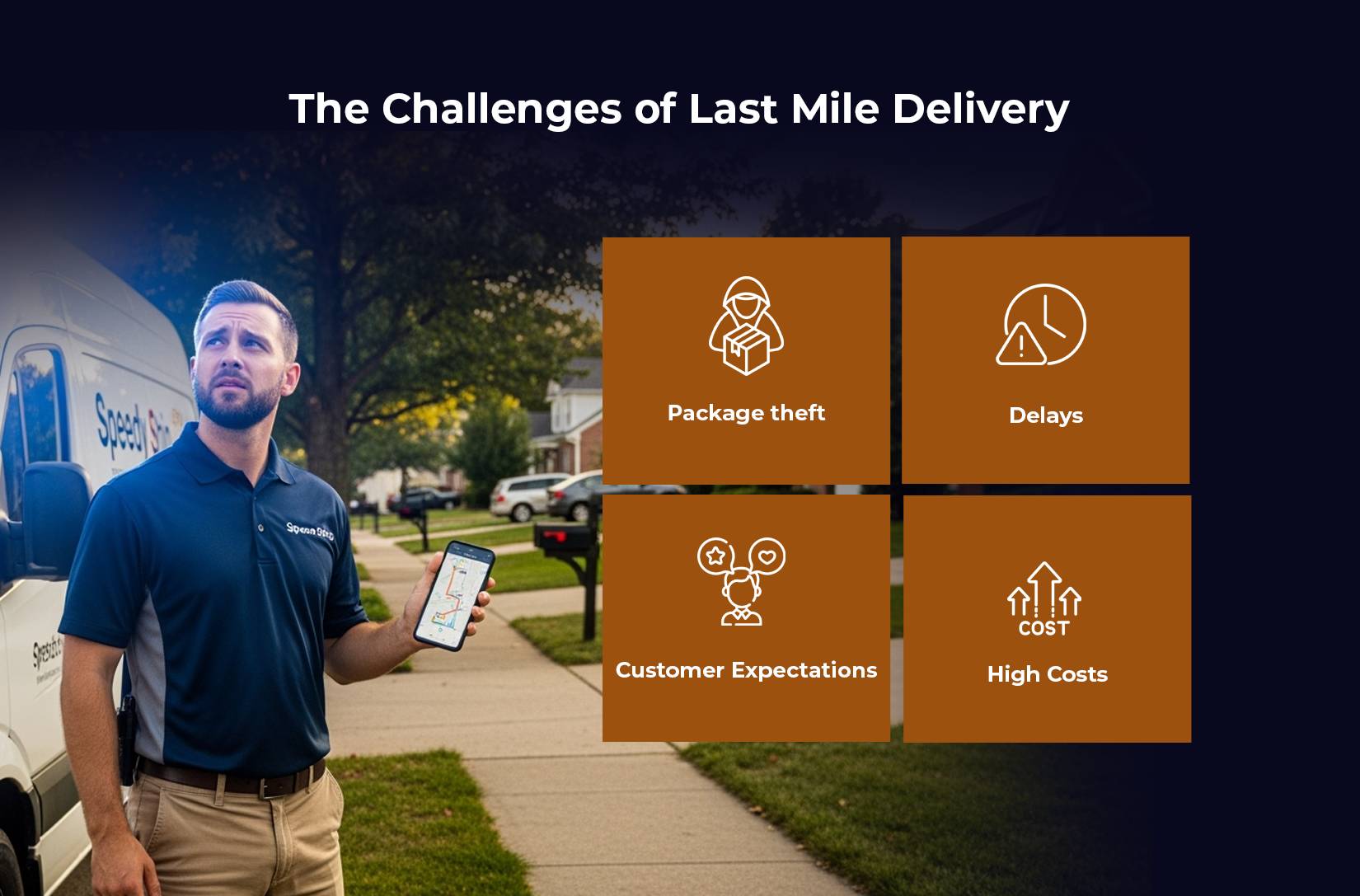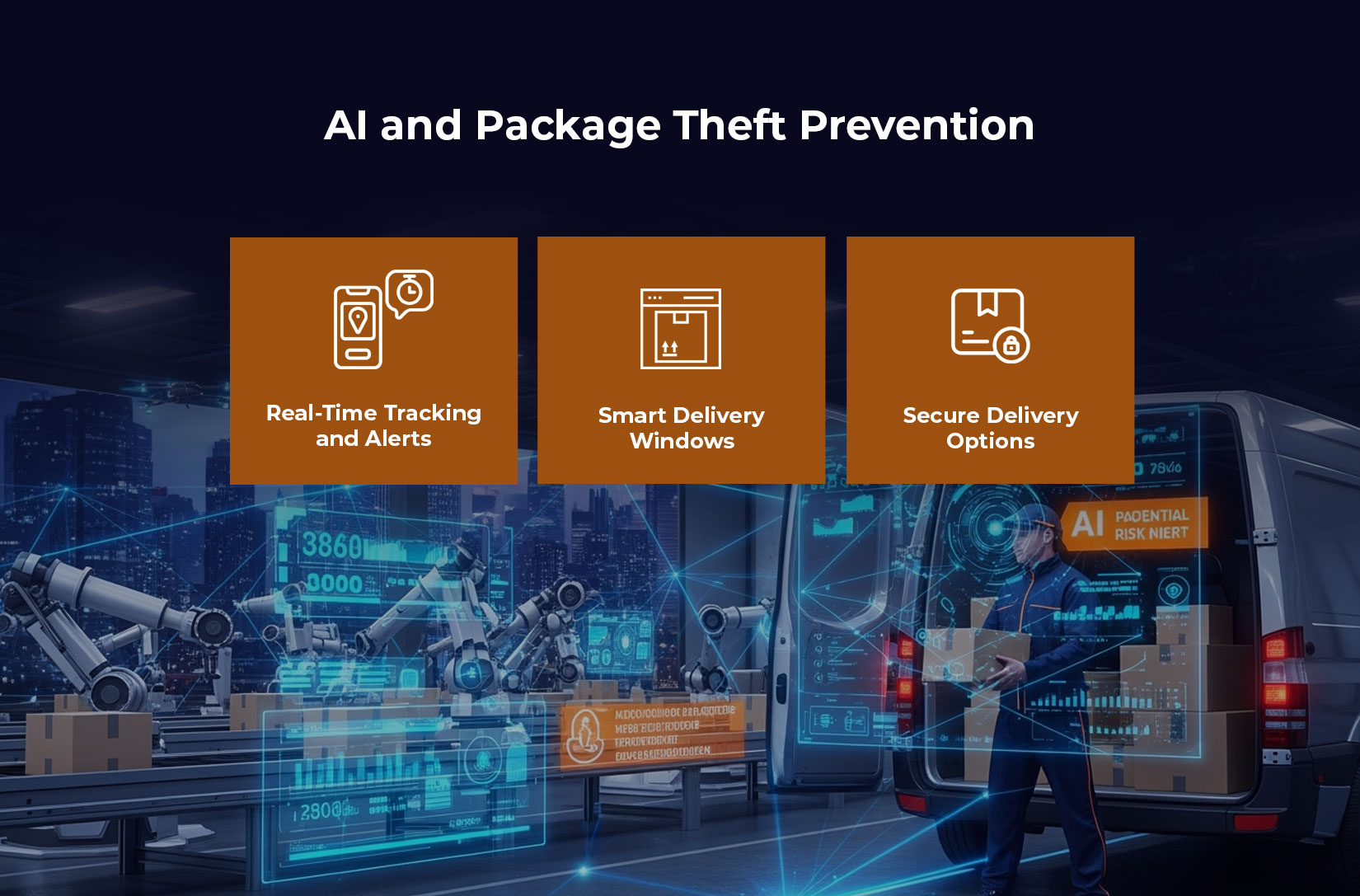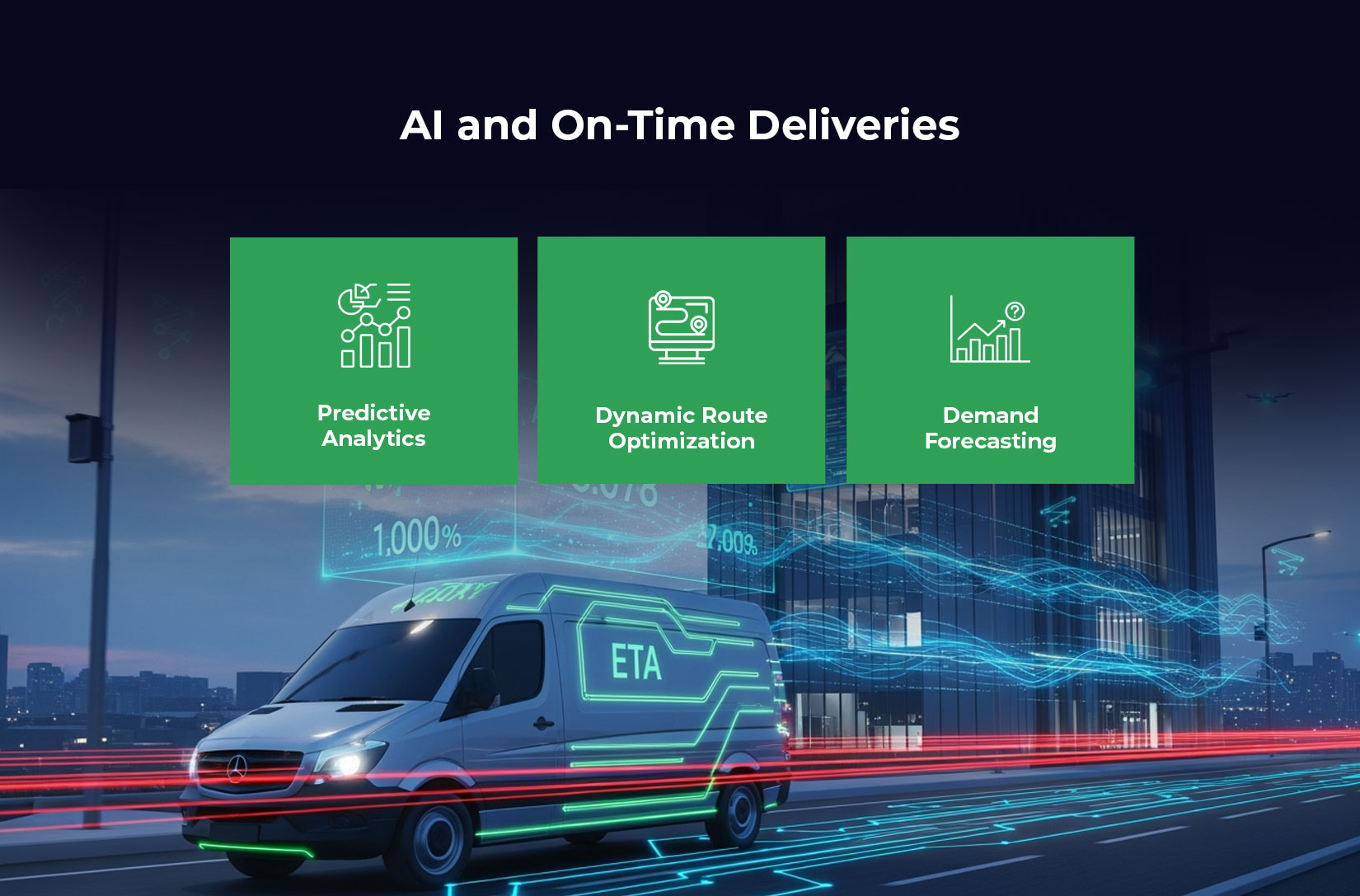
How is AI Helping to Prevent Stolen Packages and Late Deliveries?
E-commerce is a rapidly growing industry, but so are delivery frustrations. From packages stolen off porches while no one is home to deliveries arriving late, the “last mile” is becoming the most challenging and costly portion of the supply chain. In fact, according to Business Insider Intelligence last mile delivery now accounts for over 53% of total shipping costs. As the last mile becomes a more costly service, efficiency, security and customer satisfaction are at an all-time high.
Artificial Intelligence (AI) is beginning to make its mark as a “game changer” in increasing delivery efficiency and security. Businesses are now using AI-powered last mile delivery solutions to help reduce the possibility of packages being stolen. Plus, understand the likelihood of delivery delays, and optimize the delivery route. This blog will review how businesses are using AI to transform last mile logistics to provide safer, faster package delivery experiences.
The Challenges of Last Mile Delivery

Prior to discussing AI, it is helpful to understand why last-mile is so complex.
1. Package Theft:
We see reports that nearly 1 in 4 Americans experience package theft each year. When considering the cost of stolen packages, businesses and customers lose billions of dollars annually. Package theft, or ‘porch piracy,’ is not only a North American issue, it is a worldwide trend, which is eroding customer trust and resulting in increased security measures and replacement costs for businesses.
2. Delays:
Last mile deliveries are often delayed because of gridlock traffic, lack of drivers, and weather conditions. This can lead to frustration for customers and potential damage to brands. Missing a time window of even 1 minute in downtown will continue to cause cascading delays throughout the delivery network.
3. High Costs:
For logistics providers, failed or missed deliveries can quickly drive package costs up. Logistics providers will have to reroute the driver, go back for a second attempt to deliver, and possibly try to compensate the customer, all while trying to maintain a reasonable margin.
4. Customer Expectations:
With same day and overnight delivery now a standard expectation from customers, customers expect fast, reliable, and transparent packages. With little to no costs, all while logistics providers have not much, if any, tolerance for successful last mile delivery performance measures to fail wide margins or any delays.
This is where last mile software, powered by AI can change the game.
AI and Package Theft Prevention

1. Real-Time Tracking and Alerts:
Last mile logistics systems powered by AI enable packages to be tracked by customers and businesses in real-time. Tracking enables customers and businesses the ability to track packages to the exact minute they will arrive. The more tracking is available to the recipient, the less likely a theft, since the recipient will know when to expect the package.
2. Smart Delivery Windows:
Instead of generic “9 AM to 9 PM” windows of delivery, AI powered last mile delivery software can predict delivery windows to the hour of delivery. By analyzing local traffic, weather, and driver availability, intelligent last mile software can predict delivery windows the hour of delivery. This also minimizes the time the package is unattended at a residential address, lowering the chances of theft.
3. Secure Delivery Options:
AI driven last mile logistics systems can work in conjunction with smart lockers, secure drop-off points, and even dynamic rerouting and rescheduling. If a recipient is not home, an AI system can reroute delivery to a nearby smart locker in seconds or reschedule delivery time.
AI and On-Time Deliveries

1. Predictive Analytics:
AI analyzes large volumes of data, brownfield reports, delivery history of products, and weather conditions. By anticipating possible delays, an AI powered approach to last mile solutions helps drivers bypass congested areas or proactively re-schedule. For example, UPS’s AI – based ORION system saves the company 100 million miles on their fleet each year by optimizing delivery routes. This results in quicker delivery and fewer missed deadline deliveries.
2. Dynamic Route Optimization:
Standard GPS navigation is static. AI powered last mile logistics software continuously adjusts delivery routes in real time. When a road is closed or a traffic plume emerges, the driver is re-routed in real-time. This process helps ensure that packages reach customers on time.
3. Demand Forecasting:
AI is not just reacting to delivery completion or package tracking, it is predicting. By analyzing order history and customer behavior, last mile delivery software can support anticipating demand spikes. Thereby, allowing retailers/carriers to more efficiently assign drivers, warehouses, and vehicles to meet conditions during peak seasons.
The Role of AI in Customer Experience
Customers request more than goods in boxes; they request peace of mind. AI powered last mile delivery offers various customer-focused benefits:
– Reliable ETAs: Less uncertainty means happier customers.
– Proactive Notifications: Early notifications of delays or changes builds trust.
– Personalized Delivery Options: AI systems allow customers the flexibility to choose the delivery location, time, and preferences.
A study by Salesforce showed that 84% of people consider the experience of delivery to be equally important as the product itself. Businesses that invest in AI powered logistics gain a competitive advantage by exceeding customer expectations.
Case in Point: AI in Action
Amazon serves as a leading case in point. Their AI powered last mile delivery software forecasts theft of packages, suggests optimal delivery routes, and encourages protective measures such as Amazon Lockers to mitigate theft. The result is less loss of packages, improved delivery performance, and increased customer confidence.
Startups are paralleling this by employing AI powered last mile delivery systems that support smaller retailers. Through secure, transparent, and efficient deliveries, these companies can simultaneously compete with major brands. Plus also, provide a premium customer experience with little to no reductions in safety or speed.
The Future of AI in Last Mile Logistics
Artificial Intelligence (AI) has now gained acceptance as more than just a luxury item, it is redefining last mile logistics as its backbone. Below we take a look at the future:
1. AI and Drones:
Autonomous drones may be able to drop packages in locations that ensure they are safe and secure. This helps in reducing the probability of theft.
2. Computer Vision:
AI cameras mounted on vehicles will be able to detect suspicious activity in, around and beyond the delivery zone. Thus keeping the product safe and secure.
3. Predictive Security Models:
Algorithms may be able to predict neighborhoods with high probability of theft. Real-time data will take precautionary measures and adjust delivery strategies accordingly.
4. Sustainability:
Smarter route planning methods reduce fuel consumption and emissions and ultimately create sustainable last mile delivery solutions.
Conclusion
Missing packages and slow delivery are more than nuisances, they destroy customer trust and decrease margins. When using AI-driven last mile logistics, businesses have the tools to help prevent theft, predict delays, and optimize delivery performance.
Investing in AI powered last mile delivery software is not an option, for the companies that want to excel. From secure drop-offs to predictive analytics, AI is changing the method that goods move in the last mile.
In an age of expectations of speed, safety, and transparency, users are gaining confidence through AI. Thus, making the last mile delivery smarter, safer, and more secure. So, get on the AI boat and book a demo with LogiNext Solutions today. Click on the red button to know more.
24







@LogiNext